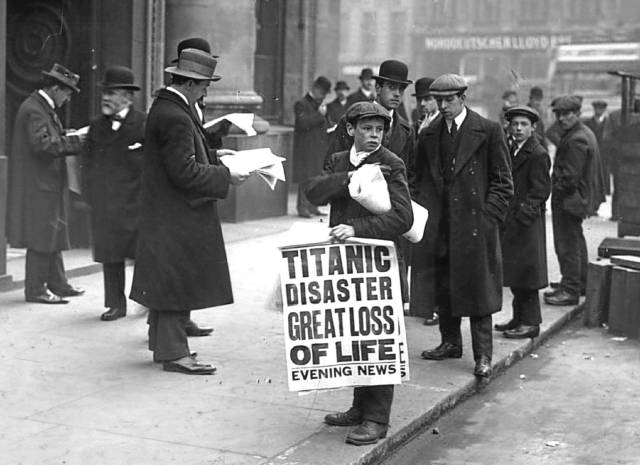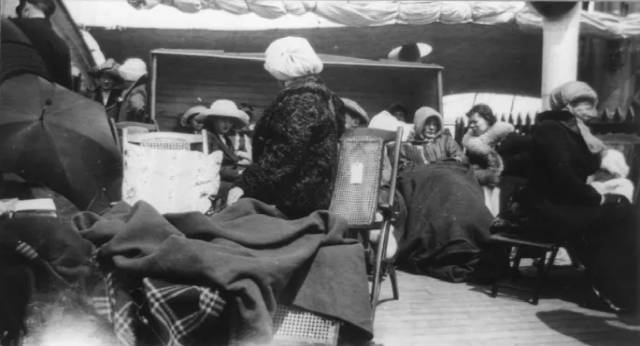It’s a name that just sticks with you, isn’t it? Titanic. It’s become shorthand for both jaw-dropping luxury and almost unthinkable disaster. Chances are, you’ve seen the movies, heard the stories, maybe even shivered a little thinking about that icy night in April 1912. But honestly, the sinking of the so-called “unsinkable” ship wasn’t just some random tragedy—it was a massive wake-up call. The kind of event that rattled the whole world and forced everyone to take a hard look at how we keep people safe at sea. This isn’t just a stroll through history books; it’s more like an emotional ride through how losing over 1,500 lives changed maritime safety forever.

Before Titanic: What Did “Safety” Even Mean Back Then?
So, imagine this: you’re boarding a ship to cross the Atlantic, feeling totally confident because hey, this thing’s supposed to be invincible! But here’s the kicker—back then, the safety rules were all over the place (and honestly, kind of scary by today’s standards). Lifeboat regulations? They weren’t based on how many people were actually onboard, but on how much the ship weighed. No joke! That meant ships as huge as Titanic only needed enough lifeboats for less than half their passengers and crew. The British Board of Trade basically said, “Eh, that’ll do.” Safety drills? Rare and inconsistent. Communication between ships—especially about stuff like icebergs—was more luck than anything else. Wireless telegraphy had just started catching on but was treated more like a cool new gadget for sending messages home instead of a lifeline.

The Night Everything Went Wrong: Where Did It All Fall Apart?
When disaster struck on April 14-15, 1912, every one of those weaknesses was exposed in the worst possible way. Let’s break down what actually happened:
- Not Enough Lifeboats: This is probably the part everyone remembers. There were only 20 lifeboats—enough for about 1,178 people when there were over 2,200 on board. That chilling fact came down to outdated rules and people worrying too much about keeping the deck looking pretty.
- Nobody Was Ready: Passengers never practiced getting into lifeboats and most of the crew barely did any drills themselves. So when it came time to evacuate? Total confusion. Some boats left half-empty because nobody really knew what they were doing or where to go.
- Communication Breakdown: Titanic’s wireless operators got several iceberg warnings earlier that day—but they didn’t pass them along to the captain because they were swamped sending personal messages for passengers instead. And get this—the nearby SS Californian saw Titanic’s distress flares but didn’t react properly; their own wireless guy was off-duty at exactly the wrong moment.
- Full Speed Ahead: Even with all those iceberg warnings floating around (pun intended), Titanic kept cruising at high speed right up until it hit.
It’s heartbreaking because so many of these problems could have been fixed—or at least made things less deadly—if anyone had taken safety seriously enough.
Aftermath: Shockwaves Around the World
News of Titanic going down hit like a punch in the gut worldwide. How could something built with all the latest tech—the “unsinkable” wonder—just vanish beneath the waves? The loss touched every level of society—from millionaires to families hoping for a new start across the ocean—which made things even more raw and real for people everywhere.

The public outcry was huge. Newspapers shared survivor accounts that broke hearts everywhere; grief turned quickly into outrage and demands for answers. Right away, investigations launched in both Britain and America—the British Wreck Commissioner’s inquiry and hearings in front of the US Senate—to figure out what went wrong and make sure nothing like this would ever happen again.
Making New Rules: The Start of Modern Maritime Safety
If there was any silver lining here, it was how fast things started changing after Titanic sank. The disaster pushed countries to work together like never before—and led directly to big changes in international law.
The biggest game-changer? The first International Convention for the Safety of Life at Sea (SOLAS) in 1914:
- Lifeboats For Everyone: No more guesswork or weird math based on weight alone; now every ship had to carry enough boats for everyone onboard.
- Mandatory Drills: Passengers and crew had to practice using lifeboats regularly—not just once in a blue moon.
- 24/7 Radio Watch: Ships with more than 50 passengers on international trips needed someone monitoring radio communications around-the-clock so no SOS would ever go unheard again.
- International Ice Patrol: Countries chipped in to fund patrols (run by what became part of the U.S. Coast Guard) watching out for icebergs along North Atlantic shipping routes—a direct answer to Titanic’s fate.
These new rules set a foundation that still shapes maritime law today—and SOLAS keeps evolving as technology improves.
Beyond Rulebooks: Tech Upgrades & Smarter Operations
But let’s be real—it wasn’t just about passing laws or holding inquiries. The shock from Titanic also pushed shipbuilders and operators to rethink everything from design to daily routines.
Ships started getting better watertight bulkheads (those interior walls inside hulls), sometimes extending higher up or even considering double hulls for extra protection against flooding. Radio became standard equipment—and soon after came radar and sonar technologies that made spotting icebergs or navigating foggy seas way easier.
There was also a cultural shift toward treating emergency preparedness as an everyday priority—not something you put off or fake your way through during inspections.
A Hard Lesson About Human Nature
Honestly though, maybe one of Titanic’s biggest lessons wasn’t technical at all—it was about attitude and human behavior.
People believed too much in hype—the “unsinkable” myth—and got complacent about risk. They ignored warnings or figured nothing bad could really happen on such an advanced ship. In reality? Overconfidence can be dangerous—even deadly—if it leads you to ignore basic precautions.
Survivor stories from that night talk about confusion, panic, acts of courage…and sadly, class differences that affected who survived and who didn’t. These are powerful reminders that even perfect regulations don’t mean much without common sense, humility, empathy—and readiness from everyone involved.

Wrapping Up: Why Titanic Still Matters Today
The sinking of Titanic stands out not just because so many lives were lost—but because it forced change on an epic scale.
If anything good came out of such heartbreak, it’s knowing those changes have saved untold numbers since then: mandatory lifeboats for all; constant radio watch; specialized patrols scanning for icebergs; stronger safety cultures aboard ships everywhere—you name it.
Sure, no system will ever be perfect…but thanks to lessons learned from Titanic (sometimes learned painfully), our seas are safer than they’ve ever been before.
Titanic isn’t just remembered as a disaster—it’s also proof that we can learn from tragedy if we choose to listen and adapt. Every time someone boards an ocean liner or cruise ship today, they’re benefitting from rules written in response to that single terrible night over a century ago.
So yeah—the legacy is bittersweet…but it matters deeply every time safety comes first over pride or convenience at sea. Here’s hoping we always remember why those standards exist—and never stop striving for safer journeys ahead.
